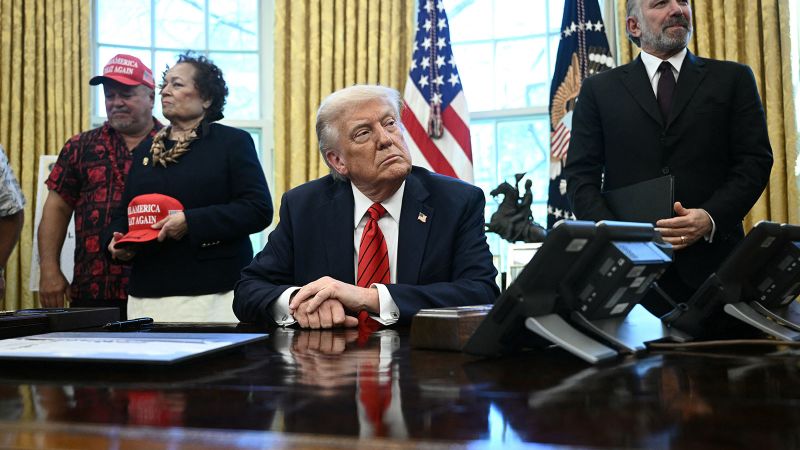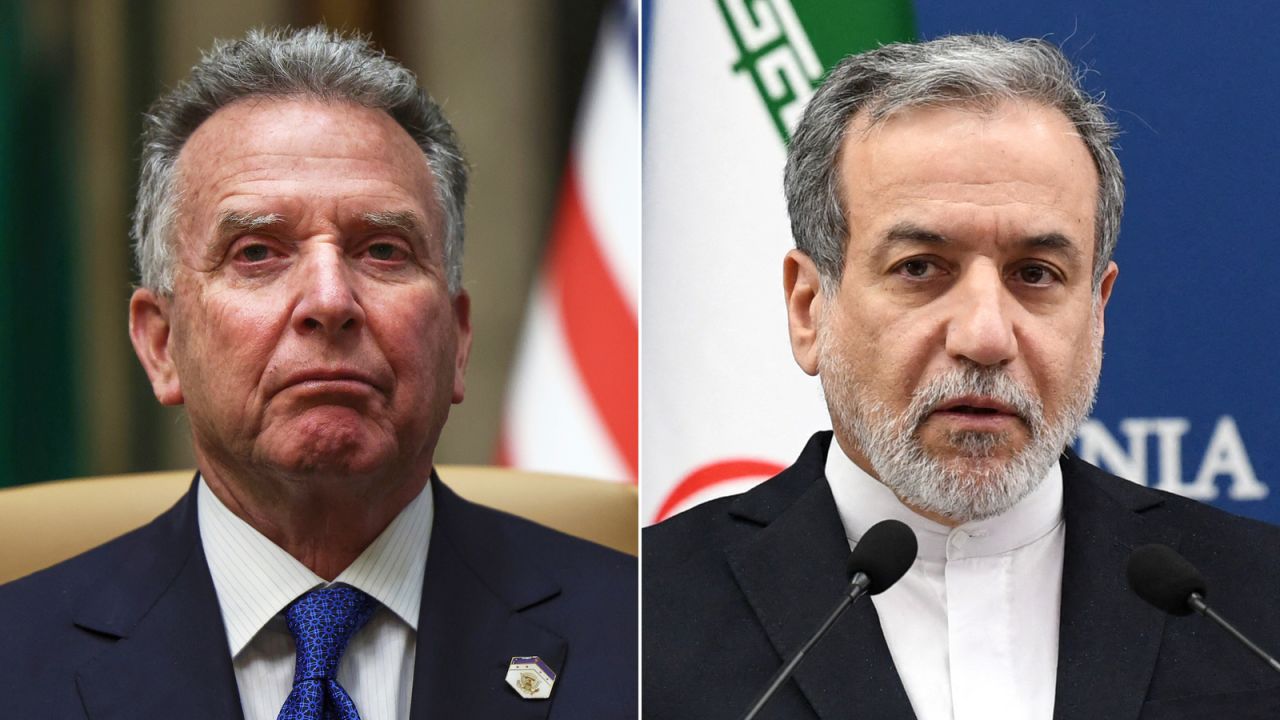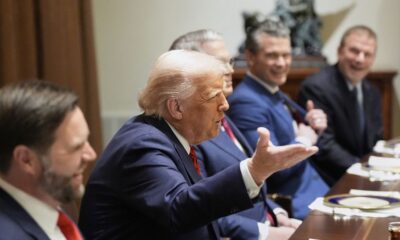New York
CNN
—
US stocks slid Thursday and the S&P 500 closed in correction, down more than 10% from its record high in February, as President Donald Trump threatened new tariffs on the European Union.
The Dow ended the day down by 537 points, or 1.3%. The S&P 500 fell 1.39% and the Nasdaq Composite was 1.96% lower.
The selloff extends a rout in US markets that has been driven by the uncertainty around Trump’s tariff announcements. The Nasdaq entered correction territory last week, and as of Thursday closed down 14.2% from its record high in December.
The S&P 500 closed at 5,521.52, down 10.1% from its record high of 6,144.15 on February 19 and notching its first correction in over a year. Correction is a Wall Street term for falling more than 10% from a recent high.
The last correction to the S&P 500 occurred in October 2023, when the benchmark index closed down 10.3% from its recent high that July, according to Adam Turnquist, chief technical strategist at LPL Financial. That correction took 24 days to recover from, Turnquist said.
Trump on Thursday threatened to impose a 200% tariff on alcoholic beverages from the European Union after the bloc on Wednesday imposed a 50% tariff on US spirits like bourbon. The EU’s tariff on US spirits was in retaliation for Trump’s sweeping 25% tariffs on steel and aluminum.
Cooling inflation data and a slight rebound in tech stocks had helped the S&P 500 and Nasdaq close higher Wednesday, but they slid Thursday as the trade tensions between Washington and Brussels escalated.
Turnquist said drawdowns are “nothing out of the ordinary,” but noted the recent drop in stocks has been “painful” because it’s been just three weeks since the S&P 500 hit a record high on February 19.
“In only a few weeks, the broader market has gone from record highs to correction territory,” Turnquist said in a note Thursday. “Tariff uncertainty has captured most of the blame for the selling pressure and is exacerbating economic growth concerns.”
Trump indicated Thursday that he is “not going to bend” on the 25% tariffs on steel and aluminum, vowing that any resulting economic disruption “won’t be very long.”
“No, I’m not going to bend at all aluminum or steel or cars. We’re not going to bend. We’ve been ripped off as a country for many, many years,” Trump told reporters in the Oval Office.
Markets dipped to their lowest level of the day after Trump’s remarks.
US Treasury Secretary Scott Bessent said Thursday on CNBC that he is not concerned about “a little bit of volatility over three weeks.”
Bessent said the Trump administration is focused on the “real economy” and the outlook for the long term.
Stocks initially wavered Thursday morning after the latest producer price index data showed inflation rose 3.2% year-over-year in February, a sharp slowdown from January. That came on the heels of consumer price index data Wednesday that also showed inflation slowed more than expected in February.
While the cooling inflation report was reassuring for investors, the budding trade war between the US and its biggest trading partners and allies has sent jitters through US stocks.
“Thursday’s inflation data is backward looking, and the real worry is the inflationary effects that may come from tariffs, which is a wildcard for markets and the Federal Reserve,” said Paul Stanley, chief investment officer at Granite Bay Wealth Management.
Wall Street’s fear gauge, the Cboe Volatility Index, or VIX, surged this week to its highest level since December. “Extreme fear” has been the sentiment driving markets since the end of February, according to CNN’s Fear and Greed Index.
“The last month has been a brutal sell-off for tech stocks and the overall market as every day (every hour) there is some newsflow coming out of the Trump White House that is changing the rules of the investing game from tariffs to chips to investments to policy changes among many others,” said Dan Ives, managing director and senior equity analyst at Wedbush Securities, in a note Wednesday.
Futures on gold surged to a record high on Thursday, signaling uncertainty about the impact of Trump’s tariffs on economic growth and geopolitical stability.
The benchmark S&P 500 is down more than 6% this year, lagging indexes in Europe and Asia.
























